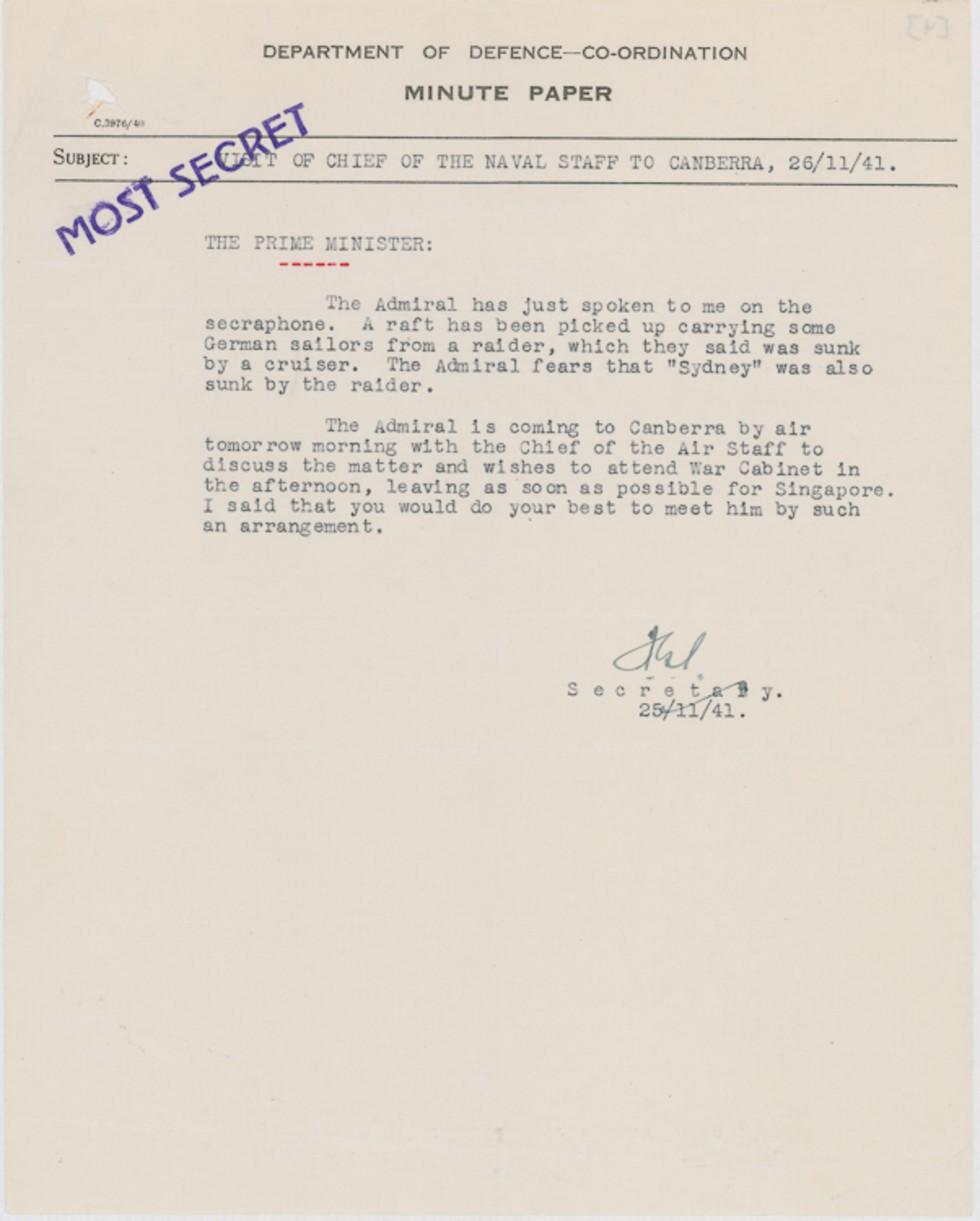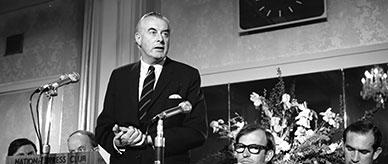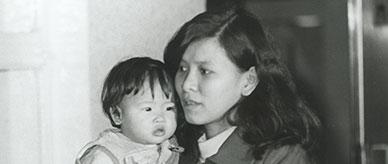


Transcript
DEPARTMENT OF DEFENCE – CO-ORDINATION
MINUTE PAPER
SUBJECT: VISIT OF CHIEF OF THE NAVAL STAFF TO CANBERRA, 26/11/41.
[Stamped:] MOST SECRET
THE PRIME MINISTER: [underlined in red]
The Admiral has just spoken to me on the secraphone [sic]. A raft has been picked up carrying some German sailors from a raider, which they said was sunk by a cruiser. The Admiral fears that “Sydney” was also sunk by the raider.
The Admiral is coming to Canberra by air tomorrow morning with the Chief of the Air Staff to discuss the matter and wishes to attend War Cabinet in the afternoon, leaving as soon as possible for Singapore. I said that you would do your best to meet him by such an arrangement.
[Illegible handwritten initials]
Secretary.
25/11/41.
About this record
This is minute to Prime Minister John Curtin was sent by Frederick Shedden, Secretary of the Department of Defence Coordination and Secretary to the War Cabinet. The disappearance of the HMAS Sydney on 19 November 1941 eventually led to a public campaign to locate the sunken vessel.
Educational value
- The sinking of the HMAS Sydney in 1941, and the loss of her 645 crew members, shocked Australians deeply. Lack of information and wartime censorship helped foster rumours about the ship's fate.
- The HMAS Sydney was sunk on 19 November 1941 after a battle with the disguised German raider Kormoran. On 24 November, after a number of unsuccessful attempts to contact the ship, a wide sea and air search was organised. Other than two lifebelts and a Carley float, no trace of the Sydney was found.
- There were no survivors from the sinking of the Sydney. The only source of information about her battle with the Kormoran came from the 315 German crew members rescued after the crippled raider was scuttled.
- Australian Naval Intelligence officers questioned the Kormoran’s crew to piece together the details of the battle. The Prime Minister confirmed on 1 December that the Sydney had been lost.
- The prisoners were then transferred to a prisoner-of-war camp in Victoria. No written records relating to the battle surfaced until 1945, when the encoded notebook of the Kormoran's captain TA Detmers was confiscated after his attempted escape.
Acknowledgments
Learning resource text © Education Services Australia Limited and the National Archives of Australia 2010.
Related themes
Need help with your research?
Learn how to interpret primary sources, use our collection and more.



